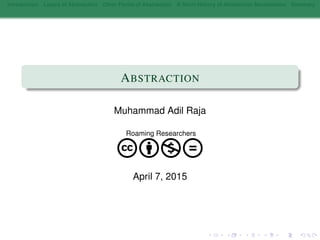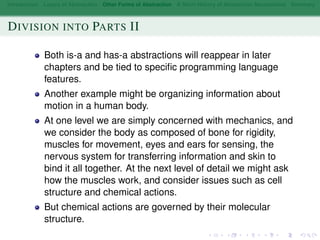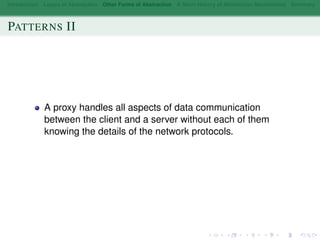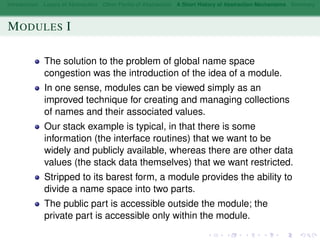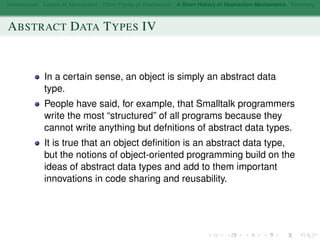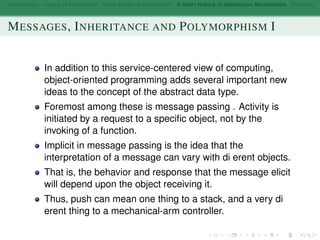The document discusses different types and levels of abstraction. It describes abstraction as purposefully hiding details to emphasize certain aspects. It outlines various layers of abstraction in programming from overall program design down to individual methods. It also discusses other forms of abstraction like dividing systems into parts and layers of specialization. The document provides examples of abstraction concepts from programming, biology, and other domains.
